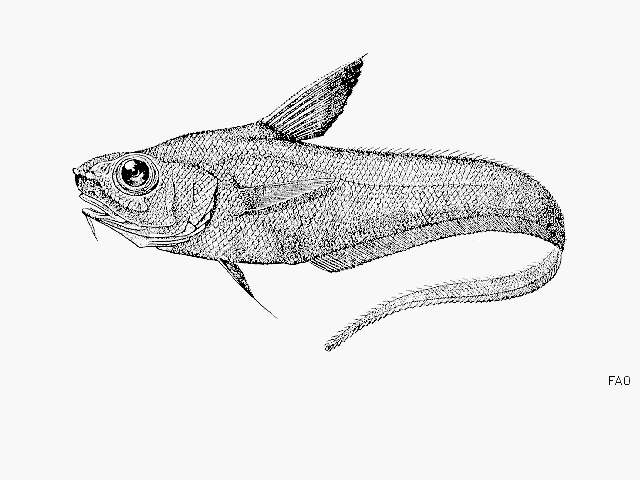| Macrouridae (Grenadiers or rattails) |
| 40 cm TL (male/unsexed) |
|
bathydemersal; marine; depth range 400 - 2375 m, non-migratory |
| Central Atlantic: Western Central Atlantic: off Chesapeake Bay, Gulf of Mexico, and the Caribbean. Eastern Central Atlantic: Mauritania to Côte d'Ivoire. |
|
Dorsal spines (total): 2-2; Anal spines: 0-0. Head large, completely scaled, including the ventral surfaces of the snout; snout short, narrow, with stout scutes at its tip and lateral angles; mouth small, restricted laterally. Scales with numerous (over 100 in large specimens) short, stout spinules arranged in V-shaped rows. Pyloric caeca short, 10 to 15. Overall color is medium to dark brown; fins generally blackish. |
| Feeds primarily on benthic organisms, especially gammarian amphipods and, to a lesser extent, lamellibranchs, copepods, polychaetes, ostracods, isopods mysids, Natantia, and echinoderms (Ref. 1371). Minimum depth record from Ref. 1371. |
|
Least Concern (LC); Date assessed: 11 July 2012 Ref. (130435)
|
| harmless |
Source and more info: www.fishbase.org. For personal, classroom, and other internal use only. Not for publication.

